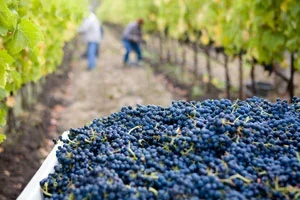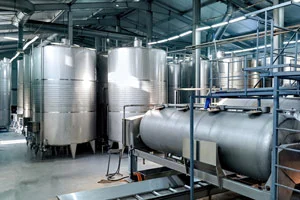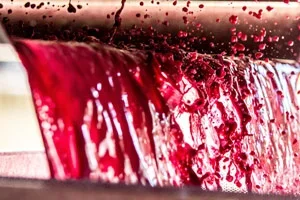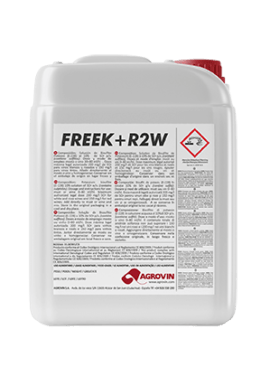Freek+
pH corrections and tartaric stability
This equipment ensures the effective reduction of potassium through a fast, efficient, and sustainable process.
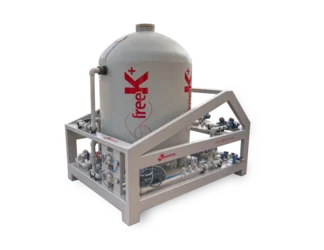
This is how Freek+ works
Effective potassium reduction
Potassium (K+) selective resins also allow us to eliminate other cations such as Ca2+, Fe2+, Fe3+, Cu+, Cu2+, Cu2+, improving wine stability. The exchange takes place between the metal cations and the hydrogen ions of the functional groups, and the exchange has a direct effect on the wine’s pH and redox potential.
Resin treatment is followed by resin regeneration. After the passage of the wine, a wash with an HCl acid solution allows the active centres to recover the H+ exchanged with the wine. The life of the resin is unlimited, provided that it is used properly.


Tartaric stability
Wine is a saturated solution of salts, with the potassium ion (K+) being the main molecule responsible for their precipitation. Decreasing the concentration of potassium in the wine prevents the solubility product of the bitartrate from being reached, thus preventing its precipitation.
The treatment will allow the potassium to be removed from a fraction of the wine, without having to pass the whole batch through the system.
Must and wine acidification
The pH of a wine is related to various chemical and microbiological processes that occur within. A variation in pH can have different consequences, since it affects the redox potential, is directly related to the combination of free SO2 and is involved in the colour and microbial stability of the medium, among other effects.
The concentration of free H+ ions is responsible for the pH of the wine. Thus, the replacement of metal cations by protons causes an increase in the total acidity and a decrease in the pH. After the passage of the wine, a wash with an HCl acid solution allows the active centres to recover the H+ exchanged with the wine. The life of the resin is unlimited, provided that it is used properly.

Advantages
- Reduction in use of tartaric acid.
- Reduction of pH.
- Better free-sulfur balance.
- Favors tartaric stability.
- Increases total acidity.
- Increases the vibrancy of the color of red wines.
- Partial elimination of positive metal ions such as calcium, iron and copper.
Characteristics and available models

* Considering the work flow of the equipment in the exchange phase and taking into account that the regeneration phase lasts approximately 45 minutes, the performance of the equipment depends on the following factors:
1. Number of daily cycles: based on winery schedule.
2. Product percentage of mixture.
3. Quantity of potassium in the product to be treated.
Recommended products
Request more information
Contact us by completing this form and we will get back to you as soon as possible. At AGROVIN, we want to hear the stories from our collaborators. Tell us yours and indicate the reason for your email.
Information request
Please enter your details below.
